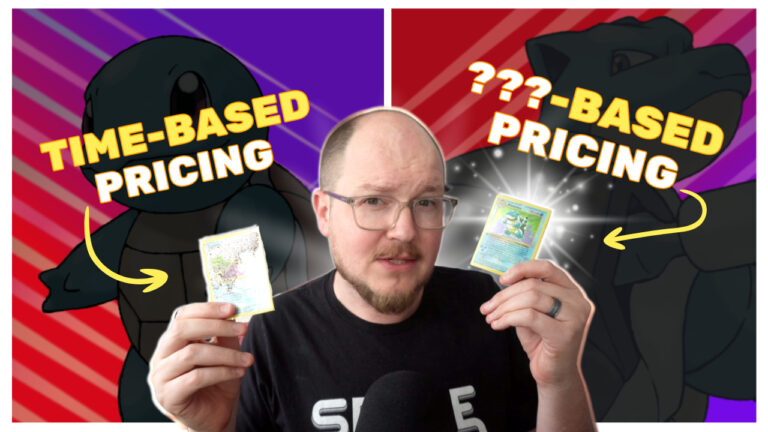Pricing myself has always been a challenge for me, and I know I’m not alone. In fact, I feel like this topic has come up a lot recently in conversations with other entrepreneurs, and last week I had to take a couple sick days which prompted a quick video on how to prepare for and price sick days into your business. You can watch that here. But there’s a lot more to dig into on the topic of pricing, so I though I would dedicate some more time to discuss the different aspects of pricing for freelancers and small business owners.
Where to start?
Pricing involves a little bit of math, a little bit of understanding the market, and a little bit of magic.
But today I want to just focus on the math piece and crunch some cold hard numbers. You can’t go into this guessing. Take time to figure out how much you need to keep yourself and your family alive – at a minimum.
Far too few freelancers are doing even that, and have found themselves stuck in a price pit.
The lies we believe
This is what happens – I know because it happened to me:
Early on your side gig is just “extra” on top of what you’re already making from another full time or part time job.
Because it’s not our main lifeline, it’s just something to help pad the Christmas gift budget or take the sting out of car repair bill, we don’t take it as seriously as if it was “real” income.
Because we don’t have a lot of experience running a business like this, we don’t believe we’re worth as much as someone who’s more established.
Because our first clients are typically personal connections – friends and family members – we feel more like we’re exchanging favors than actually doing business, and we hesitate to charge them anything at all.
And because growing a side gig is a slow burn – we might not even be thinking about proactively growing it for a while – we get stuck in these pricing patterns, and it begins to take root in our mind that this is actually our proper rate.
We get stuck in a price pit, and we haven’t even done the math to figure out if we can sustain ourselves at this rate.
Okay, okay, we’re not sustaining ourselves…. yet. It is just a side gig.
But let’s pretend it’s more than that. Imagine it’s your main source of income. Imagine you get an email from your employer tomorrow, and now your side gig is all you have. Is it enough?
Or a happier scenario – If you have any ambitions of growing your side gig into your central gig, how much money do you need to make in order for that to work?
Let’s find out.
Calculate your Freelance Rate
Now there’s lot of great budgeting templates available, but just about all of them START with your income, and show you how much you have left to divvy up amongst your expenses. So I made my version that starts with your expenses to help give you an idea of how much income you’ll need to generate to support your lifestyle. And you are welcome to use this. Just click this link and then create a copy of the sheet and you can plug in your own numbers.

Now I tried to be as thorough as possible without making it crazy. Feel free to add or edit the different line items to fit your situation. But this is what we’re trying to do:
List all of your monthly expenses. If there’s something you pay once a year or once a quarter, do some math to figure out the average monthly cost. Some of these line items are flagged as “Necessary” and others (like dining out) are “Negotiable.” I’ll show you what that’s about in a second.
List your monthly savings contributions: Retirement contributions, emergency fund savings, house savings (this could be for maintenance or a down payment to buy a home), car savings, you name it. Tweak it as you’d like, this is just to get you pointed in the right direction.
Then there are a few more pieces of info to plug in:
Do you have a spouse or partner helping bring home some bacon? Note their monthly income under the “Additional Information” section.
Now set your tax rate.
Yeah, this part isn’t fun.
We’re working our way up from the bottom line to the top. Up till now we’ve been figuring out how much money you need to have left over after taxes and business expenses in order to have enough to cover your costs of living and savings goals.
We need to add enough margin to this number to account for the taxes we’ll have to pay on our net business revenue. In the template, I wrote in 30% as a conservative starting point. You can tweak this based on your understanding of your actual tax liability, but for this exercises, it’s better to overestimate than to underestimate.
Now let’s add your business expenses. You gotta spend money to make money after all. Seriously though – don’t forget to factor in the costs associated with running your business. If you’re still in side gig mode and aren’t currently paying for something like business insurance, do your best to anticipate what you will need to be spending money on in the future to make sure you are covering those expenses.
Now, how much time will you work? Remember, we’re imagining this is your full time, sole source of income to cover all of your living expenses, so don’t limit this to side gig hours. What’s the maximum number or days each month and hours each day you are able to work? Plug that into the appropriate field in the calculator.
And then I added another line where you can define your ideal hours. This will be used to calculate a more aspirational rate that doesn’t require as much time at the desk.
Understanding your Different Rates
Now, if I did all the formulations and spread my sheets correctly, the calculator should give you a few numbers:
- Your total need,
- your day rate, and
- your hourly rate
…for 3 different scenarios.

The Survival Mode rate is the bare minimum rate your business needs to pay you, if you work the maximum number of hours, and you factor in your partner’s income. Also, it will cover 100% of your necessary personal expenses and business expenses, but only 50% of your negotiable expenses and savings goals. You’re surviving, but not thriving. If this is the rate you’re going off of, you’ll need to make some adjustments to your spending to avoid going broke.
The Comfortable rate shows what you need to earn to cover 100% of all listed expenses. It factors in your partner’s income and is calculated using the maximum number of working days and hours, but secretly adds in some flexibility and PTO. The formula subtracts an hour each day and a couple days each month, just in case you want to take long lunch break or otherwise spend some time on unbillable activities, or if you need to take a couple sick days like I did last week. Comfortable living with reasonable hours.
Finally, you have your Dream Life rate (or at least, your slightly more aspirational life rate). This covers 125% of your budget, your partner does not need to work, and you can work fewer hours (this rate uses the “ideal” days and hours you defined in the calculator).
You’re going to see quite a range. In the demo I ran, we got results from $20 an hour to over $100 an hour. But now you should start to have a clearer idea of what you need in order support your lifestyle.
But there’s one big problem with these calculations.
This is Just Step One
This only shows you how much you need to make as an individual – not necessarily how much your business will actually make. When you work for an employer, you show up to work and put in the hours, typically guaranteed to be paid a set amount for each hour you work. But when you work for yourself – when you are the business – you only get paid when a customer buys something from you. In other words, you can’t pay yourself if your business isn’t making money.
Let’s take a closer look at the demo “Comfortable” rate: Approximately $40. Assuming you work X number hours for Y number of days each month, this is the average amount of money we calculated that we need to generate per hour in order to meet all of financial commitments. But is your business actually bringing in $40 every 60 minutes? Some days, your business might not make any money, which means you’ll need to try to make TWICE as much money the next day.
Another way to think about this: If you’re a service provider, you can actively work 40 hours a week, but 20 hours of that time is internal work – creating marketing content, reaching out to prospects, writing proposals, performing administrative tasks, investing in professional development, doing real work that’s crucial to keeping your business running…. but you might only have 20 hours worth of paid client work.
The calculator gives you your internal rate; what your business needs to pay you. But to make sure your business has the cash on hand to accommodate the irregularities and unpredictabilities in your actual revenue, your customers need to pay your business a different rate. In this case, twice as much.
So we’ve finished step one – we figured out how much you need to make. Now, let’s talk about how much you need to charge. We’ll cover that in the next installment. So be sure you are subscribed to Self-Employment Sidekick, so you don’t miss more tips and tools I’m developing to help you gain clarity and confidence around your freelance pricing.


